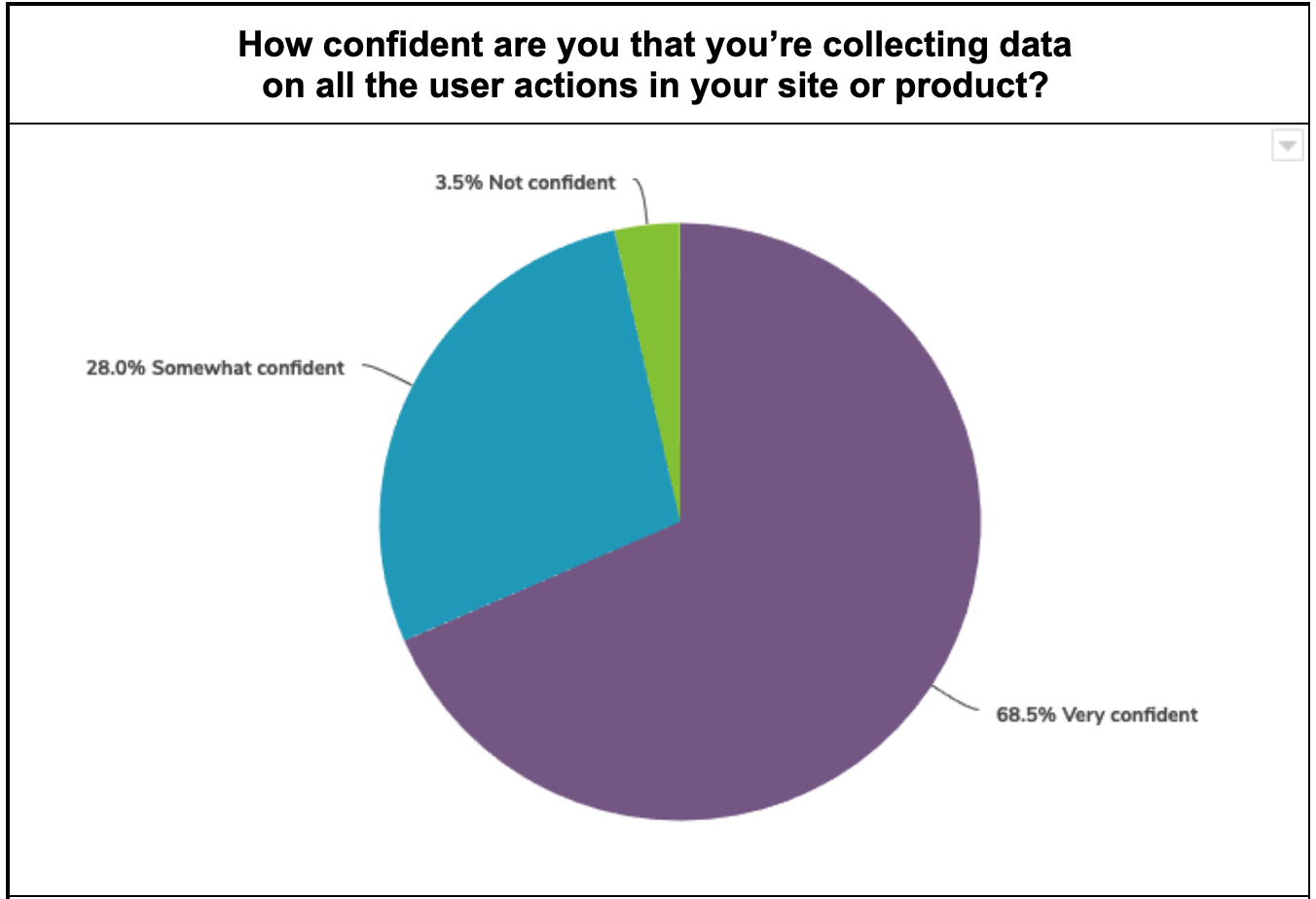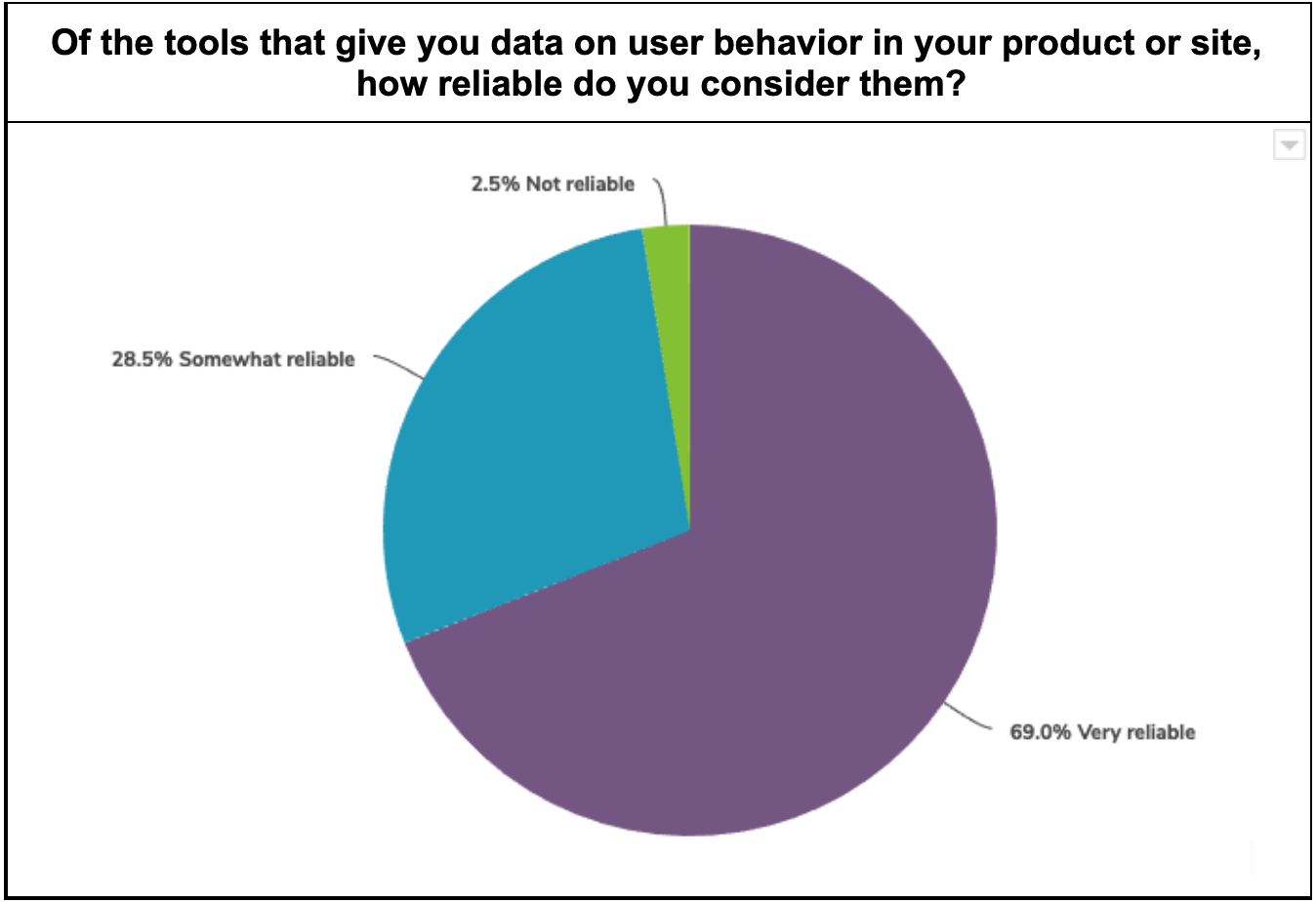How to Get Answers About Customer Behavior When You're Not Sure What to Ask
Let's face it, digital experiences aren't just the future: they're the present. It goes without saying that to succeed in the market you need to give customers a compelling and delightful experience. And that's not going to happen without some thorough introspection about your customer journey.
But … when you ask questions about your customer journey, what kinds of answers can you currently get?
A recent Heap-sponsored survey found some interesting information about the sorts of answers teams have access to. When asked in general about the information they have on customer behavior, teams said they were confident they had all the data they needed.


But when asked about the answers their data gives them, teams are much less sure.

(Check out our Digital Experience Insights Report to get more data around what teams are tracking.)
Why the gap?
The thing is, when you have some of the data, it can feel like you have all the answers.
Here's another stat to chew on. Our survey found that while 45% of people think the majority of websites don't offer clear explanations of what they're for and how to use them properly, and 43% think the majority of websites were not designed around the needs of the user, a full 95% of product teams say it's somewhat or very easy for users to navigate and use their site! Clearly both of these things can't be true at the same time.
Indeed, as your team makes decisions, it might be worth asking yourselves: how quickly can you answer the following questions? And how much of your personal money would you wager on your answers?
Which user actions BEST anticipate the behaviors you care about?
Which step in any given funnel takes people the MOST effort?
How much FRICTION do users actually experience in my product or site?
Can I identify the points of dropoff for ALL my users?
What should our team work on that will drive the MOST impact to the business?
As we saw with the stats above, lots of tools will give you an answer. The main question is: is it the answer you need?
You may have answers, but do you have the right answers? Or is asking these questions opening a can of worms for you?
Processing data doesn't guarantee you're learning anything.
Changes in your product, user experience, or customer journey need to produce tangible ROI. If they don't, your data efforts may actually be slowing you down - creating drag and resistance on teams that are already running at full capacity.
You're up the creek without a paddle….or in the data lake without a fishing pole. It's relatively easy these days to collect data and create a vast lake of information. It's a lot harder to know what's swimming in it, and then to reel in a big one for dinner. How do you know what to fish for, and what bait to use?
Most of the time, data is difficult. More difficult than it has to be. You can spend way too much time sorting through it and still not trust the results you find. Prioritization is necessary to any data collection effort, because teams always have more things to do than they have time for. They need to know what's important.
And then, you need to decide the hierarchy of importance of these inquiries. What's most valuable? It's often impossible to know. Surprises are no fun when you're wrong.
Have you ever felt sure of something — then been surprised to find out you were way off…not even close? No big deal if it's over something trivial. However, when you are making a significant product decision, it's easy to get overconfident because you have all this data support.
But what happens if the data is wrong? Or the data is right, but you have the wrong interpretation? If you plant seeds, you'll definitely get a crop, but if there's no label on the envelope, who knows what you'll end up with. And jumping to conclusions rarely ends well.
Data isn't for data's sake. It's for answers.
Right now all kinds of things are happening in your product, and if you're not tracking them, it's like wind blowing through the trees. Even if you are tracking, if you don't know what to pay attention to, you're just chasing leaves around the yard. Your efforts may keep you busy, but not bring any value to the table. When you don't know where to focus your attention, you're hoping to stumble onto something important. You simply can't iterate. And you certainly can't iterate quickly.
A powerful digital insights platform can tell you what people are doing in your digital experience - what they click, swipe, and fill out. What they do first, second, and third. Which user actions correlate with conversion or retention. And so forth. The good news is, you don't need to spend weeks and months in pursuit of answers. A digital insights platform can answer the questions you haven't even thought of yet.
But you need the right kind of digital insights platform. Because the wrong kind leads to overconfidence, and confident wrong decisions. What you want is a solution that automatically captures every event on your website and gives you the tools to organize and govern your data directly in the platform.
Digital insights tools with a complete foundation of data are starting to add advanced Data Science and ML. They can sift through all the data for you and tell you what you're looking for, rather than making you dig through piles of data and hope to find answers.
When you bring data science into the analytics game, it changes everything. If insights are the raw gold, proactive insights are like custom-fitted jewelry. Imagine pinpointing which customers a feature is working for, knowing exactly how difficult a given digital experience is, and which steps cause the most friction.
With proactive insights, there's no guessing. Because these tools have access to every interaction with your site, they can give you the answers you're looking for.
Which behavior most correlates with making a purchase? Which funnel step takes people the MOST effort? Which kind of customer is most likely to convert?
If product analytics unlocks key information about your users, proactive insights deliver the best of that information to you automatically. Proactive insights give you answers, even when you're not sure what to ask.
